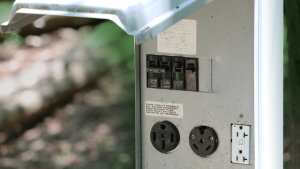If you’ve had your diesel RV or tow vehicle suddenly lose power because of a DEF (diesel exhaust fluid) issue, you’re not alone. And now, the EPA is stepping in with changes that address this problem.
What’s Changing?
Starting with model year 2027, the EPA will no longer allow manufacturers to program immediate and severe power cuts when a DEF or SCR (Selective Catalytic Reduction) system fault is detected. These faults have previously triggered what’s commonly called “limp mode,” where power and speed are sharply limited, sometimes within just a few hours.
Here’s what the updated guidance includes:
- Gradual response instead of immediate derates
- Heavy-duty pickups and light-duty cars (classified by the EPA as chassis-certified vehicles): Speed won’t be restricted to 45 mph until after 80 hours or 4,200 miles from a confirmed fault.
- Heavy-duty trucks: A 15% power reduction begins after 10 hours or 650 miles. Speed is then capped at 25 mph after 160 hours or 8,400 miles.
- Bus-style motorhomes (such as many Class A diesel pushers): Speed is limited to 50 mph after 10,500 miles or 200 hours from the fault.
These changes will apply to new diesel vehicles starting in 2027. The EPA is also encouraging manufacturers to update existing vehicles already in use, though those updates are voluntary and may vary by brand.
Read the official EPA news release here.
How This Affects RV Owners
Many RVers use diesel pickups to tow travel trailers, while others drive diesel motorhomes. This policy affects both groups:
- Tow vehicles like the Ford Super Duty, Ram HD, and GM Duramax fall into the heavy-duty pickup category.
- Motorhomes, including Class A pushers, Super C units, and many Sprinter-based Class Cs, also use SCR systems and DEF.
Most diesel-powered RVs built since 2010 rely on DEF to help reduce nitrogen oxide (NOx) emissions. When something goes wrong with the system (whether the DEF runs out, the quality is poor, or a sensor fails), current rules often trigger an aggressive derate that can quickly sideline a vehicle.
With the new rules, owners will have more time and distance to address the issue without being forced to stop or drastically slow down right away. This is especially helpful for RVers traveling in rural areas, where DEF or repair shops may not be nearby.
What About the Update for My Current Truck or RV?
The EPA is asking manufacturers to provide software updates for diesel vehicles already on the road. However, it has not set a required timeline, and the updates may not be free.
Here’s what you can do:
- Contact your dealer or manufacturer to ask if a DEF system update is available.
- Look out for service bulletins or notices related to DEF software updates.
Manufacturers are allowed to release updates without going through additional EPA approval. Once they’re ready, it’s up to them to make the updates available to owners.
Different Views on the Rule Change
Not everyone agrees on how this should be handled. Some say these changes may lead drivers to push their systems too far without addressing faults. DEF systems are designed to work as part of the engine, and skipping maintenance or running without DEF for extended periods can cause long-term wear.
At the same time, many owners have experienced issues not because they were careless, but because of sensor failures or poor DEF quality, especially during the recent supply chain shortages. Some have been forced into limp mode due to false alarms, which caused real downtime and costs.
The EPA’s updated guidance doesn’t eliminate DEF requirements. It only changes how long vehicles can continue operating after a confirmed fault, giving drivers more flexibility without completely sidelining emissions protections.
DEF Tips for RVers
Taking care of your DEF system can help avoid problems on the road:
- Check your DEF level before travel days
- Carry an extra 2.5-gallon jug, especially if you’re heading into remote areas
- Store DEF out of heat and sunlight to help it last longer (typically up to a year)
- Only use DEF that meets ISO 22241 standards
- Keep dirt or fuel out of the tank by using a clean funnel when needed
The Takeaway
For RVers who tow with diesel trucks or drive diesel motorhomes, this policy change offers more flexibility during DEF system issues. It doesn’t eliminate the need for DEF or emissions compliance. Instead, it addresses how quickly power reductions happen after a fault is detected.
If you’re running a diesel vehicle built before 2027, it’s worth checking with your dealer to see if a software update is available. And no matter what you drive, staying on top of DEF maintenance will help keep your rig running as expected.







Write a comment